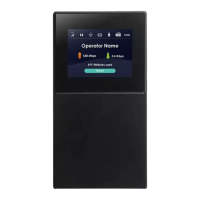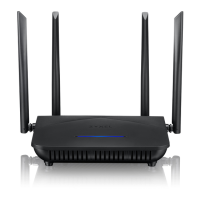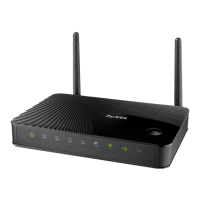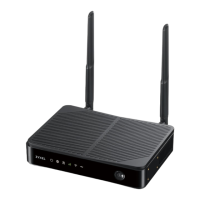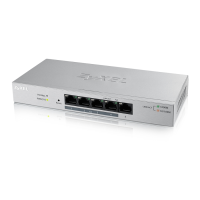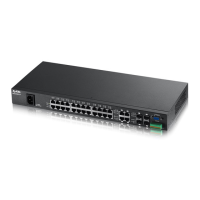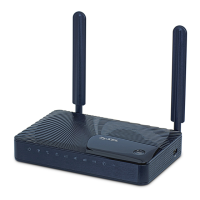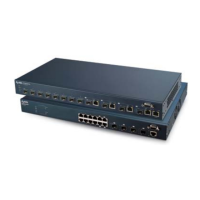Chapter 6 Connection Status
NR/FWA Outdoor Series User’s Guide
69
Number Of
Satellites
This shows the number of current active satellites. GNSS requires at least 4 satellites to determine
the position of the Zyxel Device.
NR-NSA Information
MCC This shows the Mobile Country Code (MCC). MCC is a unique code that identifies the country
where a Public Land Mobile Network (PLMN) is at.
MNC This shows the Mobile Network Code (MNC). MNC is a unique code that identifies a Public Land
Mobile Network (PLMN) in a country. MCC and MNC combined together are used to identify a
globally unique PLMN.
Service Information/SCC Information
Note: If the cellular service provider supports carrier aggregation (CA), then this section displays
statistics for the connection’s primary component carrier (PCC).
# This is the index number of the Secondary Component Carrier (SCC). The Zyxel Device supports
Carrier Aggregation (CA) to use multiple LTE carriers simultaneously for data transmission. CA
consists of a Primary Component Carrier (PCC) and secondary component carriers (SCC).
The PCC is used for control signaling and the SCC is used for increased data throughput.
Access
Technology
This displays the type of the mobile network (such as LTE, UMTS, GSM) to which the Zyxel Device is
connecting.
Band This displays the current cellular band of your Zyxel Device. The Zyxel Device supports Carrier
Aggregation (CA). There might be more than one band if the Zyxel Device is using multiple
carriers for data transmission.
RSSI (dBm) This displays the strength of the cellular signal between an associated cellular station and the
Zyxel Device.
Cell ID This shows the cell ID, which is a unique number used to identify the Base Transceiver Station to
which the Zyxel Device is connecting.
The value depends on the current Access Technology. For LTE/5G, it is the 28-bit binary number
Cell Identity as specified in SIB1 in 3GPP-TS.36.331.
Physical Cell ID This shows the Physical Cell ID (PCI), which are queries and replies between the Zyxel Device and
the mobile network it is connected to.
UL Bandwidth
(MHz)
This shows the uplink cellular channel bandwidth from the Zyxel Device to the base station.
According to 3GPP specifications, the bandwidths defined by the standard are 1.4, 3, 5, 10, 15,
and 20 MHz. The wider the bandwidth the higher the throughput.
DL Bandwidth
(MHz)
This shows the downlink cellular channel bandwidth from the base station to the Zyxel Device.
According to 3GPP specifications, the bandwidths defined by the standard are 1.4, 3, 5, 10, 15,
and 20 MHz. The wider the bandwidth the higher the throughput.
RFCN This displays the Radio Frequency Channel Number of DL carrier frequency used by the mobile
network to which the Zyxel Device is connecting.
The value depends on the current Access Technology:
• For LTE, it is the EARFCN (E-UTRA Absolute Radio-Frequency Channel Number) as specified in
3GPP-TS.36.101.
• For 5G, it is the NR-ARFCN (New Radio Absolute Radio-Frequency Channel Number).
RSRP This displays the Reference Signal Receive Power (RSRP), which is the average received power
of all Resource Element (RE) that carry cell-specific Reference Signals (RS) within the specified
bandwidth.
The received RSRP level of the connected E-UTRA cell, in dBm, is as specified in 3GPP-TS.36.214.
The reporting range is specified in 3GPP-TS.36.133.
An undetectable signal is indicated by the lower limit, example -140 dBm.
The normal range is -44 to -140. The signal is better when the value is closer to -44.
Table 12 Cellular Info: Detailed Information (continued)
LABEL DESCRIPTION
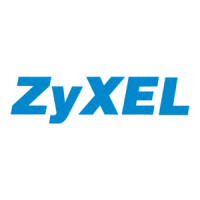
